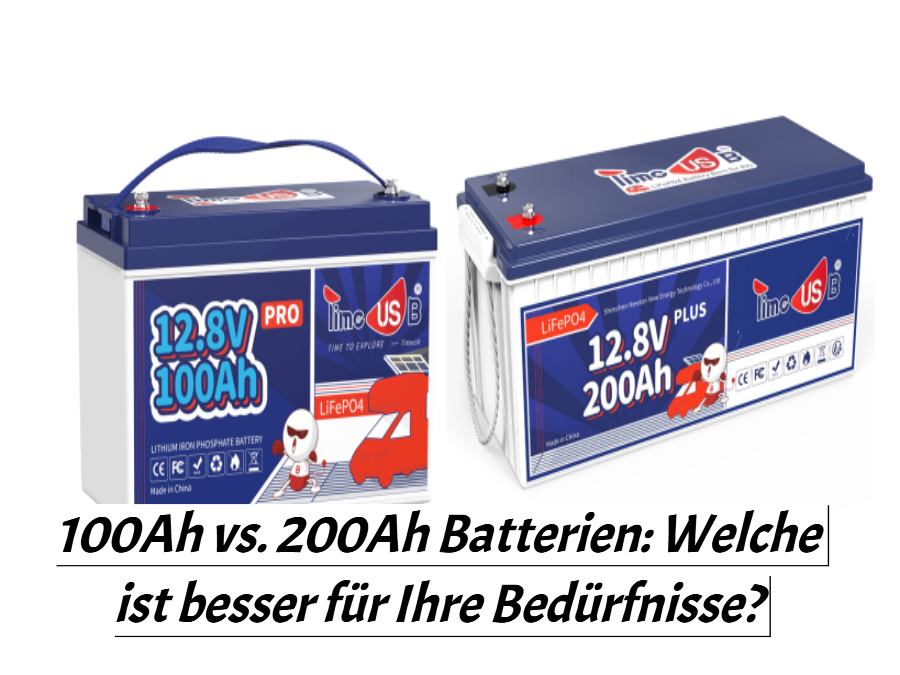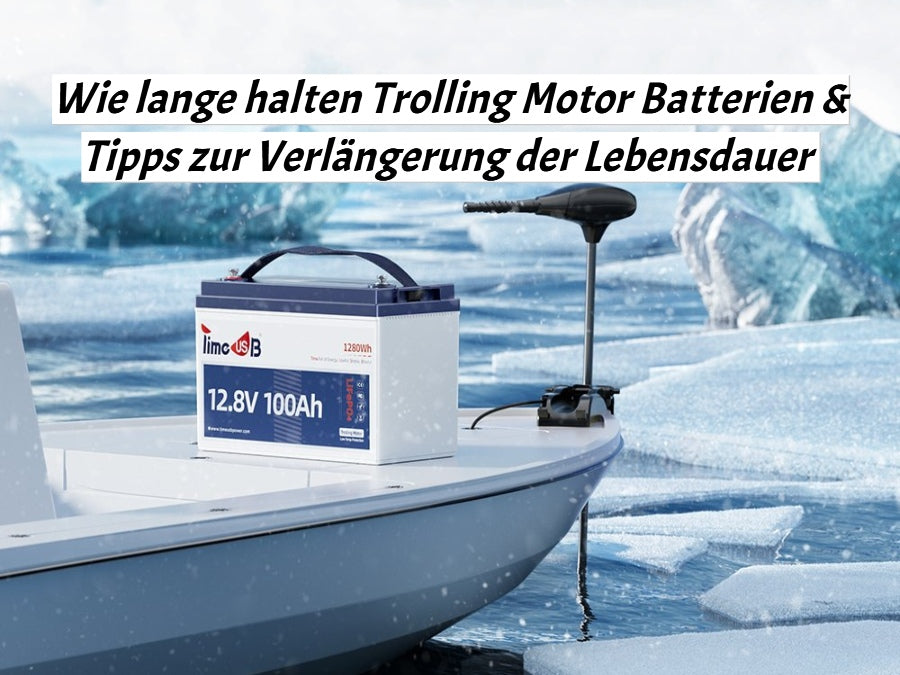6 things you should know when using LiFePO4 battery

As you may have noticed, LiFePO4 batteries are becoming increasingly popular and are replacing the batteries used in things like solar panels, RVs, golf carts, bass boats and electric motorcycles as they are by far the best.
In this article we provide a brief guide to handling LiFePO4 batteries and give you tips on charging, protection and optimal temperature. LiFePO4 lithium batteries offer some great advantages over traditional lead-acid batteries, including the fact that they are super light and safe, have a higher energy density, a much longer lifespan and require less maintenance.
Although LiFePO4 lithium batteries require little maintenance, there is still something we need to pay attention to.
1. Charging
Take for example the Timeusb 12V 100Ah Pro LiFePO4 Lithium Battery. The recommended charger should support charging lithium iron phosphate (LiFePO4) batteries. And to fully charge the battery, the DC charging voltage should be between 14.2V and 14.6V and the charging current should be less than 100A.
The voltage levels that the LiFePO4 battery reaches in different charging phases. (Take the Timeusb 12V 100Ah Pro LiFePO4 battery as an example)
| voltage type | specifications |
| nominal voltage of the cell | 12.8V |
| peak voltage of the cell | 14.6V |
| overcharge voltage | 15V |
| discharge voltage | 8.8V |
Charging a LiFePO4 battery involves two steps to increase the state of charge (SOC) to 100%. The first step is constant current charging. In this step, the charger supplies a constant current to the LiFePO4 battery. The voltage level floats until it reaches 14.6V. Until this point, the charger charges the battery with a constant current. However, when the voltage reaches 14.6V, the charger stores the voltage and keeps it constant. At this point, the battery's state of charge is about 90%. From here, the charger outputs a decreasing current to the battery while the voltage remains constant at 14.6V. When the SOC level reaches 100%, the charger automatically shuts off and stops charging the battery.
respects
1. Keep away from water while charging.
2. The best charging temperature is 0-45℃, which can accelerate the movement speed of the internal chemical material. Then we can charge faster.
3. When charging is complete, please do not connect your charger and LiFePO4 battery together.
2. Comprehensive battery protection
Lithium batteries occasionally experience deep discharge. The lowest voltage you can discharge a LiFePO4 battery with is 8.8V. Timeusb LiFePO4 battery has a built-in BMS to protect against overcharging, deep discharge, overcurrent and short circuit, as well as an excellent self-discharge rate. Without BMS protection, the battery can be destroyed by discharging even at a voltage below this voltage, and the destruction would be irreversible. That is, if you discharge the battery to less than 8.8V, the damage would be permanent.
Therefore, it is important to stop using the battery before this period expires.The LiFePO4 batteries from Timeusb are equipped with such a BMS board for self-protection.
3. Temperature influence
Temperature is one of the critical factors that can affect battery performance. The lower the temperature, the lower the available capacity. At temperatures below 0 degrees, most LiFePO4 lithium batteries cannot be charged at all.
The battery can operate at a temperature of -20℃ to 60℃, a temperature between 10℃ and 35℃ is ideal for long-term storage. Store in a fireproof container and keep out of reach of children.
4. Avoid deep discharge
While LiFePO4 batteries can be safely discharged to 100%, it is generally recommended to avoid deep discharge if possible. This is because LiFePO4 batteries have a limited number of charge and discharge cycles and deep discharge can shorten their overall lifespan. Ideally, LiFePO4 batteries should be charged once they have reached 20-30% capacity.
5. Storage
If you are not going to use your LiFePO4 battery for an extended period of time, it is important to store it properly to avoid damage. Keep the battery fully charged in a cool, dry place out of direct sunlight. You should also charge the battery every few months when it is not in use.
6. Quality is important
Finally, it is important to choose high-quality LiFePO4 batteries from reputable manufacturers. Although there are many cheaper LiFePO4 batteries on the market, they often have lower energy density and a shorter lifespan than their more expensive counterparts. Investing in a high-quality LiFePO4 battery can save you money in the long run by providing better performance and a longer lifespan.
Timeusb is a brand you can trust. We not only provide you with trustworthy, high-quality LiFePO4 batteries, but also exceptional services such as delivery within 2 to 8 days, 5 years warranty, fast online response and so on. Learn more about our products.
Conclusion
In summary, LiFePO4 batteries are a great choice for sustainable energy storage, but it is important to keep in mind these important tips for their proper use and maintenance. By following these guidelines, you can ensure that your LiFePO4 battery performs optimally and lasts for many years.




